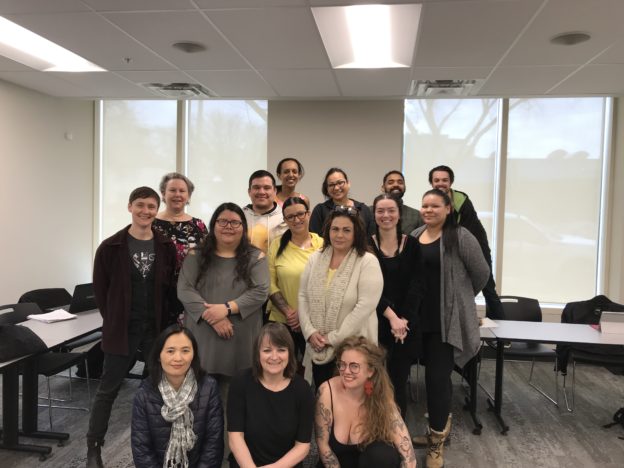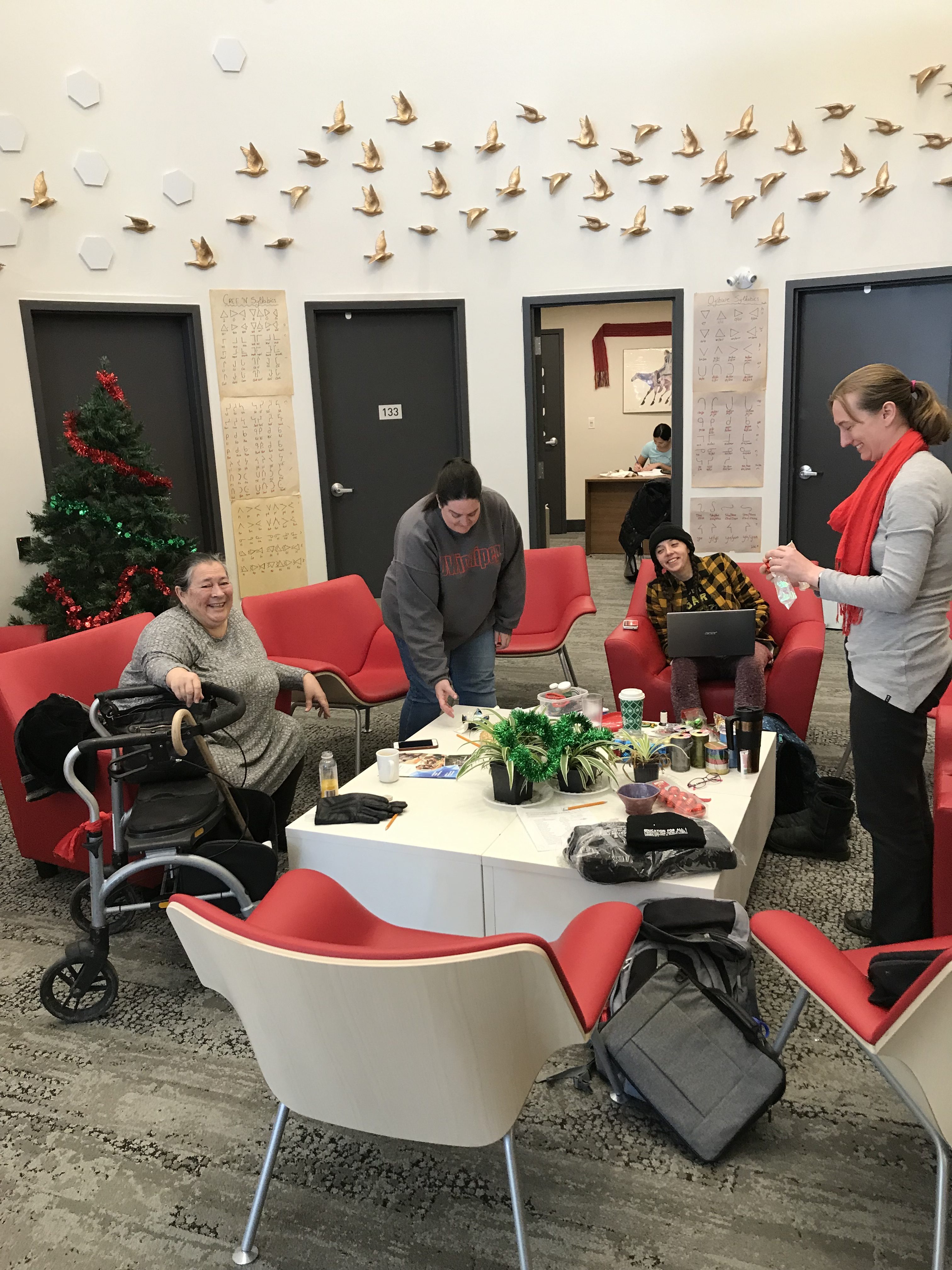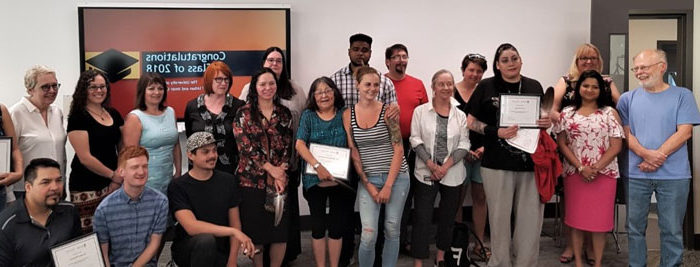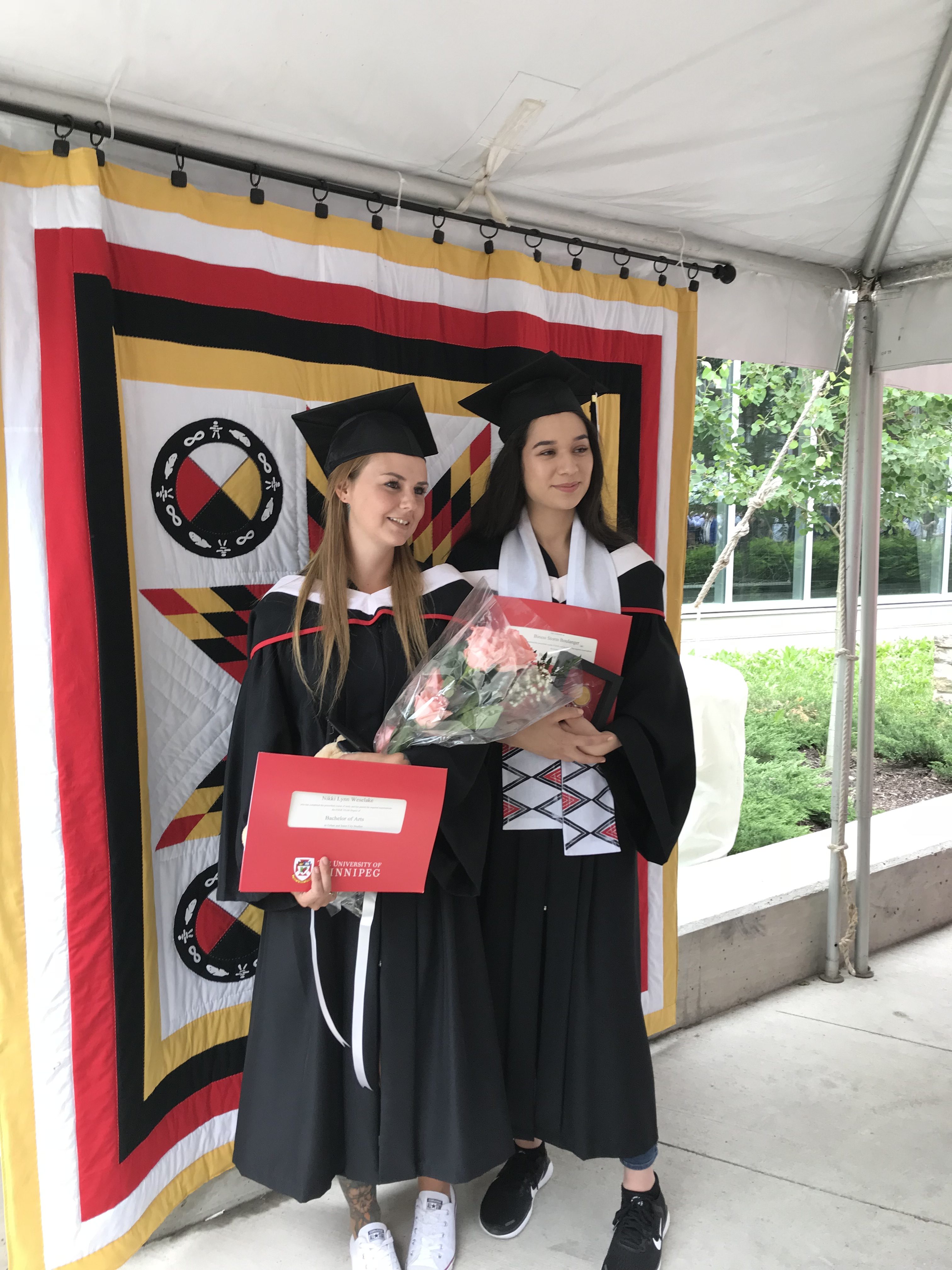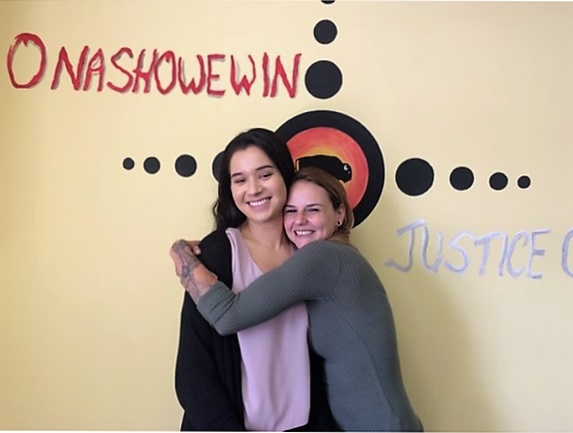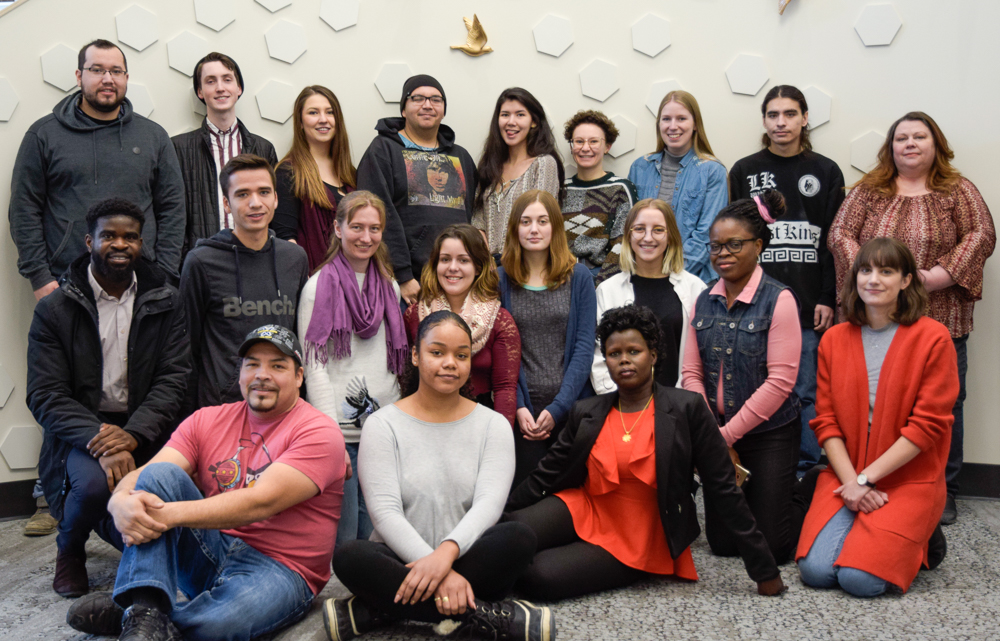The April 2015 issue of Universitas Forum titled “Inclusive Urban Development and Poverty Reduction: Learning From Innovative Practice” is the result of a collaborative project led by myself and Sara Swartz, Director of the Universitas Programme of the KIP International School (Rome, Italy), made possible with a grant from the International Development Research Centre. The project is part of a broader collaboration between the KIP International School, University of Winnipeg, University of Manitoba, Province of Manitoba, the Manitoba Research Alliance and several community based partners. The purpose of this collaboration is to bring together local and urban development practitioners, government representatives and academics from around the world to share lessons learned and develop new strategies toward inclusive development and poverty reduction.
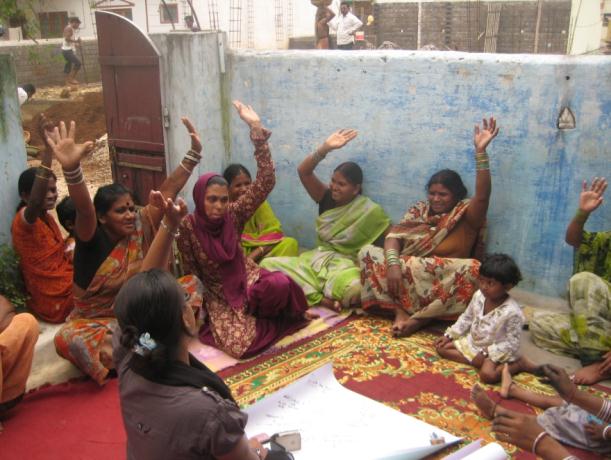
This special issue journal aligns well with our knowledge mobilization aims. It allows us to present a variety of successful experiences of inclusive urban development that have addressed the different dimensions of poverty as they are lived in diverse urban settings. These experiences come from very different developmental and cultural contexts: Senegal, Uganda and Zimbabwe in Africa; Bangladesh and India in Asia, Winnipeg, Canada, Mexico, Colombia and Peru in Latin America. But whether in the inner city of Winnipeg or the slums of Delhi, the experiences show that residents of poor, spatially concentrated areas of cities experience similar challenges – low income, low levels of employment, lack of housing and access to services, violence, low rates of education. They also show that poor communities have valuable knowledge about their problems and potential solutions.
In fact, despite the challenges, there are many innovative examples of community organizations, researchers and local governments collaborating to improve social and economic outcomes for those currently living in poverty, and also, in some cases, to address the structural inequality at the root of the problem. The need is to build on these individual success stories to identify more comprehensive solutions.
In the struggle to scale up their actions, gain recognition, influence public opinion, orient policy and spending, influence academic teaching and transform practice, local groups, however, face many barriers. Among these is the lack of time and resources to systematize work done at local level, often by small community organizations, draw lessons for the future and to share them, first and foremost with other key local actors. The case studies and videos presented in this issue of Universitas Forum were developed through the project “Innovative practices of inclusive urban development and poverty reduction”, funded by the International Development Research Centre of Canada. The project was designed to identify and support the documentation and dissemination of innovative local practices and to produce recommendations to improve practice and contribute to policy formation relevant to poverty reduction. We also wanted to strengthen strategic alliances between researchers and actors engaged in poverty reduction and inclusive urban development in a variety of contexts.
Similar problems from different perspectives
Running through the different experiences presented in this issue are several common themes and similar approaches. Each of them highlights, among other things, community-driven solutions to complex problems.
Access to land, housing and control of property rights is fundamental to ensuring safe and permanent housing, children’s education and access to livelihoods for vast numbers of people, especially women, living in informal urban settlements. This is the theme of the case study and video produced by the Zimbabwe Parents of Handicapped Children Association based on their experience in the urban slums of Harare. As mothers of children with handicaps, they face multiple barriers: abandoned by husbands and families, objects of discrimination and violence and with no property or means to earn a living, these women were forced to live a nomadic life. Their success story is based on the awareness of their legal rights, their capacity to organize and to advocate constructively with local authorities, traditional leaders and other stakeholders. In their view, moreover, “the presence of women in public offices makes it easy for grassroots women empowerment programmes to be effective, efficient and sustainable”.
Rights to land title and municipal services in poor urban areas are also at the centre of the experience of participatory planning as part of the Rajiv Awas Yojana (RAY) Scheme in Raipur and Gangtok, India. RAY is a government programme aimed at correcting the deficiencies of formal urban planning that has not created inclusive conditions for poor urban families. Instead, they “are forced to create encroachments and slums and lead extra-legal lives in deprived conditions”. The experience recounts community engagement in planning urban development projects in two municipalities in India, as part of the RAY scheme. The process is presented through the lens of two young planners working for RAY who learned that simple solutions to complex problems are often easily identified by creating the opportunity for community members to engage their knowledge and experience in government-led urban development processes. They also learned, though, that such participatory processes require time, patience and the willingness of politicians and bureaucrats to shift their plans and priorities according to people’s demands and aspirations; the alternative is disengagement and loss of confidence in the institutional process, and poorly planned cities.
Colombia is another country that has seen a rapid and unplanned increase in the urban population, many of whom are living in precarious settlements. It is also a country that has been plagued by violence with many of these new city dwellers displaced from rural areas as a result of the violent conflict over the past 40 years. This is the context for the experience in Bogotà realized by TECHO, a community organization that has focused on developing social infrastructure – roads, bridges, community centres – in neglected communities in ways that facilitate community empowerment, social cohesion and improved relations between institutions and the members of the communities themselves. The author underlines how the process of participation is incremental, expanding step by step as community members are empowered, see concrete results and identify new projects, thus developing more complex responses to their needs as the process progresses. In their experience this empowerment begins with local citizens who build the vision of their communities and local government that supports and facilitates them, “ so that they feel closer to institutions and the state….. that they are citizens”.
Colombia and India are the settings for two other experiences that address housing issues from a different perspective, that of self-construction practices. The action research experience in Delhi, India presented by Micro Home Solutions (mHS) was addressed to poor and low-income households resettled by government as part of slum eviction programs. These families are usually given tiny empty plots of land in city suburbs with unclear legal titles. Self-construction is a common practice, but as these households usually comprise workers in the informal sector who are unable to access mortgage documents, they are thus unable to afford construction loans or design assistance. The authors show how a combination of actions including facilitating access to micro-credit, individual technical design assistance to owners, sensitizing community members and training local masons on safe construction practices and advocacy with government and international agencies has led to positive results. Among these have been important proposed policy changes to the microfinance sector, to allow microfinance institutions to offer housing loans to homeowners with right to possession even if they do not have full property title and to increase the lending cap from Rs 50,000 to Rs 500,000.
COMFAMA is a private non-profit workers compensation fund in the Department of Antioquia, Colombia. The author describes the experience of a major housing upgrading program for low-income families in the municipality of developed with multiple stakeholders, including COMFAMA itself, private companies and the municipalities of the Department of Antioquia. As in the other cases, access to small loans for families without legal property title is a major problem, and thus the provision of loans to these families from COMFAMA was strategic. Given the scale of COMFAMA’s intervention, by combining provision of affordable loans, technical assistance to homeowners, negotiating prices with a network of local suppliers of building materials, the program was able to improve the living conditions of 13,571 families, revitalize the local economy and generate more than 40,000 jobs in the construction sector, mostly in the informal sector. From a more qualitative viewpoint, the author recounts the benefits of home improvements for health and sanitation, greater privacy, and simply more attractive housing that increases families’ sense of self-esteem and belonging. Moreover, the value of the homes increased and thus improved the families’ assets.
Violence, and particularly, youth violence is the theme of the case study from Lima, Peru. Youth are both the object and subject of the experience of “Peace Defenders”, a pilot initiative in a poor neighbourhood of San Juan de Lurigancho in Lima, characterized by many forms of violence including gangs. This experience focused on building youth leaders as “peace defenders” through working on their individual and collective capacities and self-esteem to address the underlying factors that make them vulnerable to violence, such as poverty, social exclusion, precarious housing, mental health issues and other factors often associated with constant migration. The experience adapted and innovated existing participatory approaches such as community safety mapping and social photography. The importance of this experience, in the eyes of the author, is not only in addressing the social stigma associated with poverty and exclusion that makes youth more vulnerable to violence; it lies in the ability to see the community through the eyes of its youth and to understand the many factors that contribute to the cycle of poverty and violence they live with. Thus it provides a vital lens, including a gender lens, for public policy and intervention aimed at addressing the multiple risks of poor and vulnerable communities.
The contributions from Winnipeg, Manitoba (Canada) illustrate that poverty exists even in countries viewed across the world as places of wealth and opportunity. Complex challenges such as income inequality, poverty, social exclusion, and urban decline persist in Winnipeg, but are also being addressed with comprehensive, long-term, multifaceted, and integrated approaches that are community led—through an approach referred to as Community Economic Development (CED). CED organizations have become a force for neighbourhood resilience, poverty reduction and building human capacity and hope, while creating more sustainable livelihoods and communities for many in the city.
While poverty in Canada affects people from all backgrounds, Indigenous people continue to fare poorly on a number of social and economic indicators when compared with non-Aboriginal Canadians. The reasons are complex, but are in part attributable to colonial policies that have left a legacy of despair and distrust, particularly in the education system. The experience of creating an intergenerational educational hub in Winnipeg’s inner city was born through collaboration among community-based organizations, post-secondary education institutions, local governments and others committed to building a holistic education model that provides opportunities for Aboriginal people and other multi-barriered residents. In addressing needs for education and employment sensitive to the specific cultural context of the local community, the hub is also contributing to revitalizing the neighbourhood where it is located, providing much needed affordable housing and generating economic recovery.
Also in Winnipeg’s north end, activists and social entrepreneurs, guided by CED principles, are creating social enterprises that generate employment and work toward changing the character of the neighbourhood. Two recent projects from the city’s North Main Street illustrate that ambitious urban renewal projects are possible and that there are diverse ways of using CED principles to achieve community vitalization, including through strategic renovation of historic buildings for community infrastructure. The initiatives described in “Our Hearts on our Streets” show how these and other community driven initiatives are creating opportunities by building a network of interconnected and socially responsible businesses and services dedicated to the health and well-being of Winnipeg’s most vulnerable individuals and neighbourhoods.
While women are disproportionately represented among the urban poor and bear the burden of being impoverished, many dynamic and energetic grassroots women’s groups are leading the initiatives to transform that reality, for themselves and their communities. For example, the relationship between urban violence and women’s economic empowerment is the theme of the action research experience from Aquiles Serdán, Chihuahua in Mexico. The author, director of the action research centre Bufete de Estudios, illustrates the process of creating a Centre for Solidarity-based Economy for Grassroots Women (CENESO, acronym in Spanish) in the municipality. The premise was that by encouraging women’s financial autonomy and improving the financial situation of their families this would also have a positive impact on preventing violence against women. The author describes the participatory process of constituting the Center that involved an innovative use of several tools such as workshops on the participatory design of the centre and on solidarity-based economy; community safety audits, a grassroots organizations’ academy and local-to-local dialogues. The process, facilitated by Bufete de Estudios Interdisciplinarios AC, brought together grassroots women from Aquiles Serdán and surrounding municipalities; the municipality and pertinent state government programmes and also points to collaboration between grassroots organizations and institutions as the key to its consolidation and future sustainability, as well as the facilitating role played by the innovative research process itself.
Improved livelihoods and women’s empowerment are the main themes of the video and case study of the Home-based Care Alliance in the periphery of Kampala, Uganda in the urban slum of Mbuya Parish. Theirs is the story of a social movement of grassroots women and men, themselves infected by HIV, who provide home-based care for people with HIV/AIDS in their community. Their experience highlights the strength of grassroots women organizing collectively and advocating with government to improve the provision of care, access formal training and recognition as caregivers, improve their collective incomes, the health and sanitation of their community and strengthen their political participation. Their success story is based on their capacity for dialogue with local government using the local-to-local model promoted by the Huairou Commission network and their inventiveness with a variety of income-generating activities such as kitchen gardens, mushroom growing techniques in small spaces to generate income and contribute to collective mechanisms for savings and credit.
Local economic development is also the theme of the case study exploring how harnessing traditional knowledge about artisan production of leather goods has driven the local economy in the Commune of Ngaye Mékhé in Senegal and combatted poverty. The author shows how, in the face of mass importation of foreign products made of synthetic materials, enhancing this value chain specific to the local culture, history and know-how of the territory linked to leather has generated an entire system. This system has had a multiplier effect on the local economy, has increased family incomes, had an important impact on women’s economic empowerment and generated significant revenue for the local public budget, in turn leading to improved services and quality of life, and a more attractive and vibrant territory in general, with its shops, ateliers, cooperatives, micro-finance institutions and services.
Drawing lessons
What can we learn from these experiences? Drawing on the lessons indicated by the authors, some common themes emerge for policy and practice:
• The best solutions are community-driven. All the cases illustrate that poor communities have valuable knowledge about their problems, the structural limits they face and potential solutions. Harnessing the knowledge that exists in poor communities leads to the most appropriate solutions to often very complex problems. The cases also illustrate the fundamental importance of collective action in making marginalized voices heard, in demanding fulfillment of rights and in bringing about necessary change.
• Still, without the partnership and support of government, including by committing the needed resources, community actions have little chance to scale up and become sustainable in the medium to long term. Governments should enable and support community-led processes. Methods such as local-to-local dialogues, as promoted by the Huairou Commission, are useful means of facilitating constructive dialogue and collaboration between community groups and public institutions.
• Participation, however, is an incremental process and needs to be nurtured over time and lead to concrete benefits for communities. The different experiences recounted in this issue refer to tools such as women’s safety audits, mapping exercises, street-corner meetings, social photography and other methods designed to facilitate the participation of even the most excluded groups in planning and decision-making. Such experiences are based on the recognition that participation should be an empowering process and that mass meetings or consultations with organizational representatives, without other deeper participatory processes, are unlikely to engage and empower such groups.
• Research can play a facilitating role. In developing several of the experiences presented here, research has had a determining role. Not only have researchers documented and analyzed existing processes, they have been directly engaged with local actors in conceptualizing and accompanying new initiatives, facilitating participatory processes and have contributed to innovations that have produced positive benefits. This has required adopting “hybrid” methods such as partnership research, participatory action research, participatory mapping, safety audits and others where researchers work with local actors in a process of co-construction, analysis and advocacy work.
• The best solutions are complex, addressing the multiple dimensions of poverty and the underlying factors. Whereas, all the cases published here have a thematic focus, in reality these are just entry points to a broader process of local poverty reduction. They show that education, violence reduction, local and community economic development, community vitalization, housing, urban planning, access to property and economic assets are all intricately related and cannot be addressed effectively in silos.
• Networks. An important opportunity comes from participating in international networks. Several of the experiences, such as that of ZPHCA in Zimbabwe, Mbuya Home-based care alliance in Uganda, CENESO in Mexico and the CED experiences in Winnipeg are part of national, regional and international networks. Networks facilitate peer learning and dialogue, exchanges of experiences, practices and instruments beyond providing opportunities to bring local experiences and lessons into the policy arena at international level.

